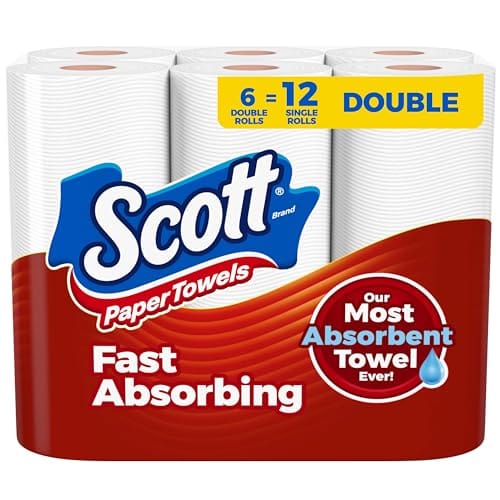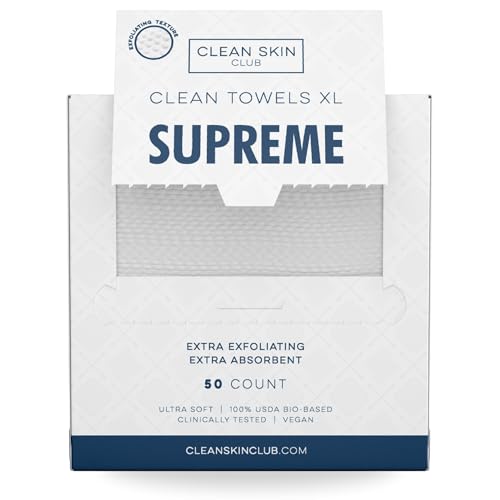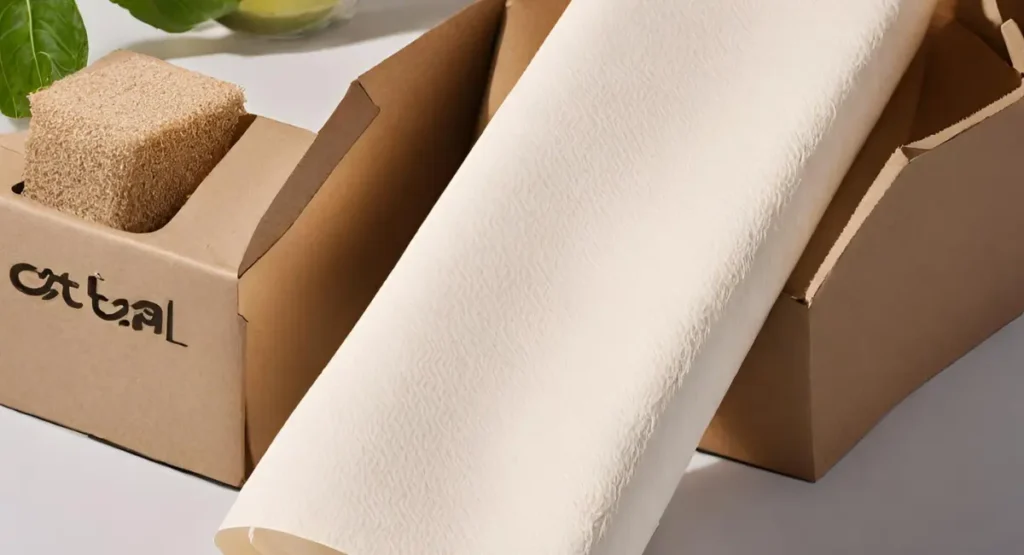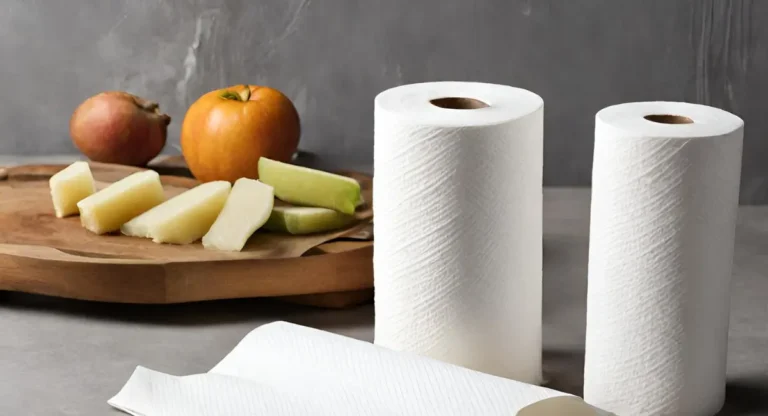- What are paper towels made of?
- Understanding Biodegradability
- Biodegradability Of Paper Towels
- Factors Affecting Biodegradability
- Alternatives To Conventional Paper Towels
- Regulations On Paper Towel Production
- Consumer Responsibility
- Frequently Asked Questions: Are paper towels biodegradable?
- Conclusion
Let’s choose wisely for a sustainable future.
Composition Of Paper Towels
At first glance, paper towels look simple. Yet their composition is a blend of ingredients and processes. The main element is cellulose fibers, sourced from wood or recycled paper. Manufacturers blend these fibers to create a strong, absorbent structure. Many paper towels also have adhesives and chemicals for better performance. Here’s a breakdown of the typical content of paper towels:- Virgin wood pulp: This comes from trees and is the cleanest source of cellulose.
- Recycled paper materials: These reduce waste and use less energy in production.
- Bleaching agents: They make the towels white and are often used in the processing.
- Wet-strength additives: These help the towels resist tearing when wet.
- Dyes and scents: Some towels have these for aesthetic reasons or to mask odors.
Understanding Biodegradability
What does “biodegradable” mean?
Factors Affecting Biodegradability
Not all items break down at the same speed. Several factors, like material composition, oxygen availability, and moisture content, influence the process.- Material Composition: Some materials degrade faster than others. Simplistic molecular structures often decompose quickly.
- Oxygen Availability: Oxygen fuels the decomposition. Enclosed conditions may slow down the breakdown.
- Moisture Content: Moisture assists the microorganisms in their work. Too dry or too wet, and the process suffers.
Biodegradability Of Paper Towels
Decomposition Process Of Paper Towels
Paper towels decompose more quickly than many other materials. Their decomposition depends on several factors:- Type of paper towel
- Environmental conditions
- Presence of microorganisms
Environmental Impact
While paper towels can be eco-friendly, their impact varies.| Type of Paper Towel | Environmental Impact |
|---|---|
| Recycled paper towels | Lower impact |
| Non-recycled paper towels | Higher impact |
Factors Affecting Biodegradability
Chemical Additives In Paper Towels
Chemical additives impact a paper towel’s biodegradability. Many paper towels undergo a bleaching process. This process may use chemicals like chlorine. Bleached towels take longer to break down. Dyes and fragrances also add to this effect. Paper towels without these additives biodegrade faster. Unbleached varieties, often labeled as ‘natural’ or ‘eco-friendly,’ fare better in the environment. These options break down more quickly and seamlessly blend back into nature.Composting Vs. Landfill Disposal
The end location of paper towels influences their biodegradability. Composting provides the ideal conditions: moisture, warmth, and a mix of materials. These conditions encourage microorganisms to thrive, breaking down the towels.- Composting promotes faster decomposition of paper towels.
- Landfills lack the necessary elements for quick breakdown.
- Oxygen-rich environments found in composts dissolve paper towels swiftly.
Alternatives To Conventional Paper Towels
Reusable Cloth Towels
Reusable cloth towels stand as a top choice for cutting down on single-use paper towels. Here’s why they’re a smart pick:- Longevity: Cloth towels can last for years, reducing the need to buy paper towels regularly.
- Sustainability: Using textiles like cotton or bamboo means fewer trees are cut down.
- Efficiency: They’re often more absorbent than paper, making cleanup quick and easy.
Bamboo Paper Towels
Bamboo paper towels are another eco-friendly selection. Let’s look at their benefits:- Rapidly Renewable: Bamboo grows back quickly after cutting, ensuring a steady, sustainable source.
- Biodegradability: They break down faster than traditional paper towels, leading to less waste in landfills.
- Antibacterial: Bamboo naturally fends off bacteria, keeping your towels hygienic for longer periods.
Regulations On Paper Towel Production
Government Guidelines
Government bodies enforce regulatory standards for paper towel manufacturing. These guidelines dictate materials used, production methods, and biodegradability. Governments aim to reduce waste and encourage recycling. Listed below are key aspects of these guidelines:- Material sourcing is regulated to ensure sustainable forestry practices.
- Chemical usage is restricted to prevent pollution.
- Recycling mandates are imposed to encourage the use of post-consumer recycled fiber.

Industry Standards
Manufacturers adhere to industry standards that complement government guidelines. These standards promote responsibility and sustainability in production. Major industry certifications include:| Certification | Purpose |
|---|---|
| FSC Certification | Ensures products come from responsibly managed forests. |
| EcoLogo | Verifies reduced environmental impact throughout the product life cycle. |
| Green Seal | Identifies products that demonstrate sustainable attributes. |
Consumer Responsibility
Proper Disposal Practices
Positively contributing to the environment starts with proper disposal practices for paper towels. Here are some tips:- Compost brown paper towels if they have not been used with chemicals.
- Avoid flushing them down the toilet, as they can cause blockages and end up in waterways.
- Use municipal bins for disposal if composting is not an option.
- Check with local waste management about recycling non-contaminated paper towels.
Reducing Paper Towel Usage
The best way to reduce waste is by minimizing the use of paper towels. Switch to alternatives, like:- Reusable cloth towels that can be washed and reused.
- Microfiber cloths, which are highly absorbent and effective.
- Old t-shirts or sheets were cut into rags for cleaning.
Frequently Asked Questions: Are paper towels biodegradable?
Are paper towels eco-friendly?
Paper towels are not considered eco-friendly. Although they derive from a renewable resource, their production and disposal impact the environment negatively. They typically contribute to deforestation and waste, and their manufacturing process consumes significant energy and water.
How long do paper towels take to decompose?
Paper towels decompose relatively quickly, taking about 2 to 4 weeks in a composting environment. However, the rate of decomposition can vary depending on factors such as moisture, temperature, and the composition of the towels themselves.
Can you compost paper towels?
Yes, you can compost paper towels, especially if they are unbleached and free from chemicals or synthetic fibers. Soiled paper towels can be composted, but it’s best to avoid adding those contaminated with cleaning chemicals or grease.
Do paper towels break down in landfills?
Paper towels do break down in landfills, but the process is slow due to a lack of oxygen. In the anaerobic conditions of a landfill, paper towels can release methane, a potent greenhouse gas, contributing to environmental problems.
Conclusion
Navigating the realm of eco-friendly products can be daunting. It’s clear that paper towels aren’t as biodegradable as we might hope, especially those with chemicals and plastics. Opting for alternatives can make a significant difference in reducing waste. Embracing compostable or reusable options contributes positively to our planet’s health.
- What are paper towels made of?
- Understanding Biodegradability
- Biodegradability Of Paper Towels
- Factors Affecting Biodegradability
- Alternatives To Conventional Paper Towels
- Regulations On Paper Towel Production
- Consumer Responsibility
- Frequently Asked Questions: Are paper towels biodegradable?
- Conclusion
Let’s choose wisely for a sustainable future.
What are paper towels made of?
Composition Of Paper Towels
At first glance, paper towels look simple. Yet their composition is a blend of ingredients and processes. The main element is cellulose fibers, sourced from wood or recycled paper. Manufacturers blend these fibers to create a strong, absorbent structure. Many paper towels also have adhesives and chemicals for better performance. Here’s a breakdown of the typical content of paper towels:- Virgin wood pulp: This comes from trees and is the cleanest source of cellulose.
- Recycled paper materials: These reduce waste and use less energy in production.
- Bleaching agents: They make the towels white and are often used in the processing.
- Wet-strength additives: These help the towels resist tearing when wet.
- Dyes and scents: Some towels have these for aesthetic reasons or to mask odors.
Understanding Biodegradability
What does “biodegradable” mean?
Factors Affecting Biodegradability
Not all items break down at the same speed. Several factors, like material composition, oxygen availability, and moisture content, influence the process.- Material Composition: Some materials degrade faster than others. Simplistic molecular structures often decompose quickly.
- Oxygen Availability: Oxygen fuels the decomposition. Enclosed conditions may slow down the breakdown.
- Moisture Content: Moisture assists the microorganisms in their work. Too dry or too wet, and the process suffers.
Biodegradability Of Paper Towels
Decomposition Process Of Paper Towels
Paper towels decompose more quickly than many other materials. Their decomposition depends on several factors:- Type of paper towel
- Environmental conditions
- Presence of microorganisms
Environmental Impact
While paper towels can be eco-friendly, their impact varies.| Type of Paper Towel | Environmental Impact |
|---|---|
| Recycled paper towels | Lower impact |
| Non-recycled paper towels | Higher impact |
Factors Affecting Biodegradability
Chemical Additives In Paper Towels
Chemical additives impact a paper towel’s biodegradability. Many paper towels undergo a bleaching process. This process may use chemicals like chlorine. Bleached towels take longer to break down. Dyes and fragrances also add to this effect. Paper towels without these additives biodegrade faster. Unbleached varieties, often labeled as ‘natural’ or ‘eco-friendly,’ fare better in the environment. These options break down more quickly and seamlessly blend back into nature.Composting Vs. Landfill Disposal
The end location of paper towels influences their biodegradability. Composting provides the ideal conditions: moisture, warmth, and a mix of materials. These conditions encourage microorganisms to thrive, breaking down the towels.- Composting promotes faster decomposition of paper towels.
- Landfills lack the necessary elements for quick breakdown.
- Oxygen-rich environments found in composts dissolve paper towels swiftly.
Alternatives To Conventional Paper Towels
Reusable Cloth Towels
Reusable cloth towels stand as a top choice for cutting down on single-use paper towels. Here’s why they’re a smart pick:- Longevity: Cloth towels can last for years, reducing the need to buy paper towels regularly.
- Sustainability: Using textiles like cotton or bamboo means fewer trees are cut down.
- Efficiency: They’re often more absorbent than paper, making cleanup quick and easy.
Bamboo Paper Towels
Bamboo paper towels are another eco-friendly selection. Let’s look at their benefits:- Rapidly Renewable: Bamboo grows back quickly after cutting, ensuring a steady, sustainable source.
- Biodegradability: They break down faster than traditional paper towels, leading to less waste in landfills.
- Antibacterial: Bamboo naturally fends off bacteria, keeping your towels hygienic for longer periods.
Regulations On Paper Towel Production
Government Guidelines
Government bodies enforce regulatory standards for paper towel manufacturing. These guidelines dictate materials used, production methods, and biodegradability. Governments aim to reduce waste and encourage recycling. Listed below are key aspects of these guidelines:- Material sourcing is regulated to ensure sustainable forestry practices.
- Chemical usage is restricted to prevent pollution.
- Recycling mandates are imposed to encourage the use of post-consumer recycled fiber.

Industry Standards
Manufacturers adhere to industry standards that complement government guidelines. These standards promote responsibility and sustainability in production. Major industry certifications include:| Certification | Purpose |
|---|---|
| FSC Certification | Ensures products come from responsibly managed forests. |
| EcoLogo | Verifies reduced environmental impact throughout the product life cycle. |
| Green Seal | Identifies products that demonstrate sustainable attributes. |
Consumer Responsibility
Proper Disposal Practices
Positively contributing to the environment starts with proper disposal practices for paper towels. Here are some tips:- Compost brown paper towels if they have not been used with chemicals.
- Avoid flushing them down the toilet, as they can cause blockages and end up in waterways.
- Use municipal bins for disposal if composting is not an option.
- Check with local waste management about recycling non-contaminated paper towels.
Reducing Paper Towel Usage
The best way to reduce waste is by minimizing the use of paper towels. Switch to alternatives, like:- Reusable cloth towels that can be washed and reused.
- Microfiber cloths, which are highly absorbent and effective.
- Old t-shirts or sheets were cut into rags for cleaning.
Frequently Asked Questions: Are paper towels biodegradable?
Are paper towels eco-friendly?
Paper towels are not considered eco-friendly. Although they derive from a renewable resource, their production and disposal impact the environment negatively. They typically contribute to deforestation and waste, and their manufacturing process consumes significant energy and water.
How long do paper towels take to decompose?
Paper towels decompose relatively quickly, taking about 2 to 4 weeks in a composting environment. However, the rate of decomposition can vary depending on factors such as moisture, temperature, and the composition of the towels themselves.
Can you compost paper towels?
Yes, you can compost paper towels, especially if they are unbleached and free from chemicals or synthetic fibers. Soiled paper towels can be composted, but it’s best to avoid adding those contaminated with cleaning chemicals or grease.
Do paper towels break down in landfills?
Paper towels do break down in landfills, but the process is slow due to a lack of oxygen. In the anaerobic conditions of a landfill, paper towels can release methane, a potent greenhouse gas, contributing to environmental problems.
Conclusion
Navigating the realm of eco-friendly products can be daunting. It’s clear that paper towels aren’t as biodegradable as we might hope, especially those with chemicals and plastics. Opting for alternatives can make a significant difference in reducing waste. Embracing compostable or reusable options contributes positively to our planet’s health.
- What are paper towels made of?
- Understanding Biodegradability
- Biodegradability Of Paper Towels
- Factors Affecting Biodegradability
- Alternatives To Conventional Paper Towels
- Regulations On Paper Towel Production
- Consumer Responsibility
- Frequently Asked Questions: Are paper towels biodegradable?
- Conclusion
Let’s choose wisely for a sustainable future.




